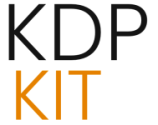Mastering Your Digital Reading Collection: Strategies for an Organized and Enriched Reading Life

The literary landscape has transformed dramatically, with digital books now occupying a central role in how we consume stories and information. This evolution presents avid readers with both exciting opportunities and the inherent challenge of managing an ever-expanding digital library. As platforms like Amazon Kindle continue to dominate the e-book market, the importance of effective digital library organization has never been more pronounced. This topic is garnering significant attention across various media, underscoring the need for readers to adapt and develop robust strategies for curating their digital collections to enhance their overall reading experience.
The Evolving Landscape of E-books and Digital Libraries
The shift towards digital formats has fundamentally altered our reading habits. E-books offer unparalleled accessibility and portability, allowing readers to carry entire libraries in their pockets. This convenience, however, necessitates a more proactive approach to organization than traditional physical libraries. The continuous advancements in e-reader technology and digital book distribution models promise to further reshape our engagement with literature, making it crucial for readers to stay informed and implement effective management techniques.
Understanding the Core Components of a Digital Library
At its core, a digital library is far more than a mere collection of files. It is a meticulously curated space for your reading material, encompassing not only the e-books themselves but also the rich metadata associated with them. This metadata includes essential details such as the author, title, genre, series information, and even your personal notes and highlights. The platform you utilize—whether it’s a dedicated e-reader like a Kindle, a tablet application, or desktop software—forms the critical infrastructure of your digital library. The ability to access your collection across multiple devices is a significant advantage, but it also demands a more deliberate organizational strategy.
Strategies for Effective Digital Library Management
To truly master your digital reading collection, a systematic approach to organization is paramount. Implementing consistent strategies will not only save you time but also enhance your overall reading enjoyment.
Establishing a Consistent Naming Convention
A foundational step in organizing any digital collection is the implementation of a clear and consistent naming convention for your files. While this may seem like a minor detail, it significantly impacts your ability to locate specific books quickly. Consider a system that includes the author’s last name, followed by the title, and perhaps a series number if applicable. For example, “Tolkien J.R.R. The Hobbit” or “Rowling J.K. Harry Potter and the Sorcerer’s Stone.” Consistency is key; once you establish a system, adhere to it rigorously. This simple habit will save you countless hours of searching through disorganized folders.
Leveraging Metadata for Enhanced Searchability
Beyond file names, the metadata embedded within your e-books is an incredibly powerful tool for organization. Many e-reading platforms allow you to edit this information, enabling you to add genres, tags, or even custom fields. Properly tagged books can be easily filtered and searched, allowing you to find all your science fiction novels, for instance, or all books by a particular author, regardless of how they are physically filed. This is particularly useful for large collections where manual browsing becomes impractical. Think of metadata as the intelligent index to your digital reading world.
Creating a Logical Folder Structure
While many e-reading apps manage files internally, having a personal backup or a separate organizational system on your computer can be highly beneficial. Consider creating a hierarchical folder structure that mirrors your preferred way of categorizing books. Common approaches include organizing by genre, author, series, or even by reading status (e.g., “To Read,” “Currently Reading,” “Read”). Experiment with different structures to find what makes the most sense for your personal workflow and browsing habits. A well-thought-out folder system acts as a reliable backup and a portable library.
Utilizing Tags and Collections within E-reading Software
Most e-reading applications, including those for Kindle devices and apps, offer robust features for creating custom collections or tags. These are virtual groupings that allow you to categorize books without altering their physical file locations. You can create collections for specific genres, moods, authors you’re following, or even books you plan to discuss with friends. This level of granular organization within the software itself provides an immediate and intuitive way to navigate your library based on your current interests or needs.
Optimizing Your Reading Experience. Learn more about Organize Your Digital Library
Beyond mere organization, several strategies can significantly enhance your overall reading experience within your digital library.
Curating Your “To Be Read” List
A constantly growing “to be read” or TBR list is a common phenomenon among avid readers. Effective organization involves not just acquiring books but also managing this list. Consider creating a dedicated digital collection or using a bookmarking feature within your e-reader to keep track of books you intend to read. Regularly reviewing and pruning your TBR list can help you focus on what you genuinely want to read next, preventing overwhelm and ensuring you’re always engaging with content that excites you.
Implementing a Reading Status System
Beyond simply “read” or “unread,” implementing a more nuanced reading status system can be highly beneficial. You might categorize books as “currently reading,” “paused,” “finished,” “re-reading,” or even “abandoned.” Many e-reading platforms allow you to mark books with these statuses, or you can use tags for this purpose. This provides a clear overview of your reading journey and helps you pick up where you left off without confusion. It also offers a sense of accomplishment as you move books through your personal reading pipeline.
Leveraging Bookmarking and Annotation Features
Digital libraries offer powerful tools for interacting with your reading material. Bookmarking specific pages or sections allows you to easily return to important passages or points of interest. Annotation features, where you can highlight text or add notes, transform your e-books into interactive journals. Organizing these annotations and highlights, and being able to search them later, adds another layer of depth to your digital library. Some platforms even allow you to export your notes, making them accessible outside the e-reading environment.
Personalizing Your Reading Environment
While not strictly about file organization, personalizing your reading environment significantly impacts your overall experience. This includes adjusting font sizes, screen brightness, and background colors to suit your preferences and the lighting conditions. Many e-readers also allow for the creation of custom reading profiles. These settings, saved and easily accessible, contribute to a more comfortable and immersive reading session, making your digital library a more inviting space.
Tools and Technologies for Digital Library Management
Several tools and technologies can assist you in managing your digital library effectively.
Exploring E-reader Software and Apps
The primary interface for most digital libraries is the e-reading software or app. Amazon Kindle’s ecosystem, for instance, offers a comprehensive suite of tools for managing your library across devices. Other popular options include Apple Books, Google Play Books, Kobo, and universal e-reader software like Calibre. Each platform has its strengths in terms of organization, metadata editing, and syncing capabilities. Understanding the features of your chosen platform is crucial for effective management.
Considering Dedicated Library Management Software
For users with exceptionally large or complex digital libraries, dedicated library management software can be a game-changer. Programs like Calibre are renowned for their powerful features, allowing for extensive customization of metadata, file conversion, and the creation of sophisticated organizational systems. These tools often go beyond what built-in e-reader apps offer, providing greater control and flexibility for the serious digital book collector.. Learn more about The New York Times
Backing Up Your Digital Library
The importance of backing up your digital library cannot be overstated. While cloud storage services associated with e-reader platforms offer a degree of safety, it’s prudent to maintain your own independent backups. This could involve regularly copying your e-book files to an external hard drive, a network-attached storage (NAS) device, or a secure cloud storage service. A comprehensive backup strategy ensures that your entire collection is protected against device failure, account issues, or accidental deletion.
Synchronizing Across Multiple Devices
One of the key advantages of digital libraries is the ability to read across multiple devices. Ensuring that your reading progress, annotations, and library organization are seamlessly synchronized is vital. Most modern e-reading platforms handle this automatically via cloud syncing. However, it’s good practice to periodically check your sync settings and ensure that your library is up-to-date on all your devices, from your e-reader to your smartphone and tablet.
Advanced Organization Techniques
For those seeking to take their digital library management to the next level, several advanced techniques can be employed.
Creating Smart Collections Based on Rules
Some advanced library management tools and e-reading platforms allow for the creation of “smart collections” or dynamic playlists. These collections are automatically populated based on predefined rules, such as books published in a specific year, books with a certain rating, or books that contain specific keywords in their metadata. This automated organization saves time and ensures that your collections are always current without manual intervention.
Integrating Reading Data with Other Productivity Tools
For those who like to track their reading habits or integrate them with other aspects of their digital life, consider syncing your reading data with productivity tools. Some apps allow you to export reading statistics, which can then be imported into spreadsheets or personal knowledge management systems. This can provide insights into your reading patterns, favorite genres, and reading speed, further enhancing your understanding of your own habits.
Managing Different File Formats
The digital library landscape isn’t limited to a single file format. E-books come in various formats like EPUB, MOBI, PDF, and AZW. Effective organization may involve converting files to a consistent format that is compatible with your preferred reading devices and software. Tools like Calibre excel at format conversion and can help ensure that all your books are accessible regardless of their original format.
Organizing Non-Book Digital Content
While the focus is on books, a truly comprehensive digital library might also include related content such as author interviews, literary criticism, research papers, or even audiobooks. Developing a system to integrate and organize these supplementary materials alongside your e-books can enrich your reading experience and create a more holistic collection of literary resources.
The Role of Metadata in a Connected Digital World
Metadata is the silent backbone of any well-organized digital library, playing a crucial role in discoverability and usability.
Ensuring Accurate and Complete Metadata
The accuracy and completeness of your e-book metadata are paramount. Inaccurate author names, missing series information, or incorrect genre tags can hinder your ability to find and enjoy your books. Take the time to verify and correct metadata, especially for books acquired from various sources. Well-maintained metadata is the backbone of an efficient digital library.
Understanding Metadata Standards
While not always necessary for casual users, understanding common metadata standards like Dublin Core or ONIX can be helpful for those who engage deeply with digital publishing or library science. These standards provide a framework for consistent and interoperable metadata, ensuring that information about your books is structured in a universally recognizable way.
Leveraging Metadata for Discovery
Well-organized metadata not only helps you find books within your own library but can also aid in the discovery of new reading material. Many e-reading platforms use metadata to recommend books you might enjoy. By ensuring your own library’s metadata is accurate, you contribute to a more robust recommendation engine, both for yourself and potentially for the platform’s wider user base.
The Future of Metadata and Digital Libraries
As technology advances, the role of metadata is likely to become even more sophisticated. We may see more dynamic metadata that updates automatically, or AI-powered metadata generation that can intelligently categorize and tag content. Staying abreast of these developments will be key to maximizing the potential of your digital library in the years to come.
Maintaining and Evolving Your Digital Library
An organized digital library is not a static entity; it requires ongoing maintenance and adaptation.
Regularly Reviewing and Culling Your Collection
Just as with physical books, it’s beneficial to periodically review your digital library. This involves assessing which books you’ve read and enjoyed, which you might want to re-read, and which no longer hold interest for you. Don’t be afraid to remove or archive books that you are unlikely to revisit. A decluttered library is a more manageable and enjoyable one.
Adapting to New E-reading Technologies
The digital reading landscape is constantly evolving with new devices, software updates, and file formats emerging regularly. Staying adaptable and willing to learn about new technologies is essential for maintaining an efficient and up-to-date digital library. This might involve exploring new e-reading apps or understanding how to manage different DRM (Digital Rights Management) protections.
Sharing and Lending Digital Books (Where Permitted)
While digital lending is more complex than with physical books, some platforms offer limited sharing or lending capabilities. Familiarize yourself with the terms of service for your e-reading platform to understand any options for sharing books with friends or family. Responsible digital sharing can extend the reach of literature within your social circles.
The Long-Term Preservation of Your Digital Library
Consider the long-term preservation of your digital library. This involves ensuring that your chosen file formats remain accessible and that your backup strategies are robust enough to withstand technological obsolescence. Investing time in organizing and maintaining your library now will ensure its longevity and your continued access to the stories and information you cherish.
The Enduring Value of an Organized Digital Reading Space
The benefits of a well-organized digital library extend far beyond simple tidiness, profoundly impacting your reading life.
Enhancing Reading Enjoyment and Discovery
An organized digital library transforms reading from a potentially chaotic experience into a streamlined and enjoyable one. When you can easily find the book you want to read, access your notes, and navigate your collection effortlessly, your overall reading pleasure is significantly enhanced. It also encourages exploration and discovery, as a well-cataloged library invites you to delve into different genres and authors you might otherwise overlook.
Saving Time and Reducing Frustration
The hours spent searching for a misplaced file or trying to remember where you saved a particular e-book are frustrating and unproductive. An organized system eliminates this wasted time, allowing you to spend more of your valuable hours actually reading. The reduction in digital clutter also leads to a calmer, more focused reading environment.
Building a Personal Literary Archive
Your digital library is a reflection of your intellectual journey and personal interests. By organizing it effectively, you are essentially building a personal literary archive—a curated collection of works that have shaped your thoughts, provided entertainment, or expanded your knowledge. This archive becomes a valuable resource for future reference, reflection, and even sharing.
The Personal Satisfaction of Control
There’s a unique sense of satisfaction that comes from having control over your digital environment. Mastering the organization of your digital library empowers you to manage your reading life efficiently, reducing digital overwhelm and fostering a more intentional approach to consumption. This sense of order and accomplishment can extend beyond your reading habits into other areas of your life.





